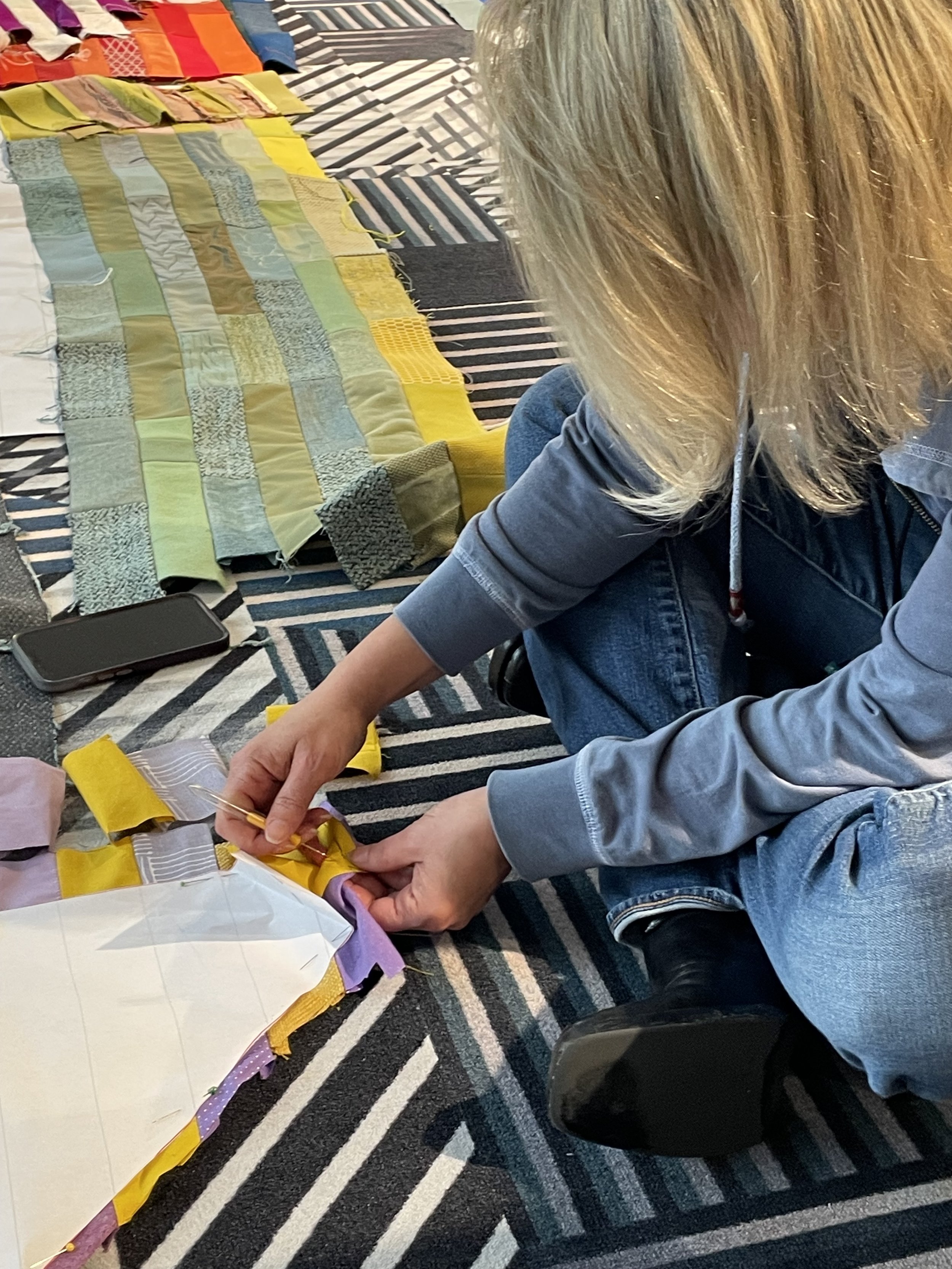In Stitches
By Lisa Knip
Quilting isn’t new. Historically, quilting was one way for women to tell stories and create a visual language. To be sure, the origins of quilting focused on utility, thrift, and necessity. But more than just “making a blanket,” quilting is an expression of creativity, resourcefulness, and skill. We know that crafting is good for our mental health and reduces stress (which is why there was a marked uptick in quilting during a certain recent pandemic): quilting is soothing, it’s meditative, it’s time-consuming but it isn’t tedious.
Some of my office and industry colleagues have been participating in quilt-making for years, long before the pandemic sent the population searching for new projects and skills. In previous years, our quilting efforts supported the International Interior Design Association (IIDA), with the quilts being auctioned off to raise money for Free Arts NYC. Each company designed and crafted individual quilts for auction.
This year was a little bit different, with the addition of a new sponsor and new quilt goals. A team was created to sew “a quilt” to be used as a backdrop for the Design Industries Foundation Fighting AIDS (DIFFA)’s 40th anniversary gala. “Quilts hold a profound historical significance within DIFFA, serving as a poignant tribute to cherished memories and a solemn acknowledgment of those lost to the HIV/AIDS epidemic.”
DIFFA was established in 1984 in response to the HIV/AIDS crisis. DIFFA now supports a number of community initiatives, working tirelessly to combat HIV/AIDS, homeless, food scarcity, and mental health issues. This quilt was designed using the DIFFA’s 40th anniversary logo as inspiration. (To call it a quilt is a bit of a misnomer; the quilt was designed as “one quilt” but was actually composed of four separate quilts.)
“What distinguishes these quilts is their unique origin: meticulously crafted by a diverse quilting bee comprised of interior designers, manufacturers, furniture dealers, clients, and all stakeholders. Utilizing discarded textile samples from the Architecture & Design industry, these artisans have transformed over 15 years’ worth of materials, totaling approximately 3000lbs, salvaging them from contributing to landfills.” Pretty cool, right? Materials were sourced from fabric samples discarded or unused from project work. We did need to supplement some colors here and there—honestly, there just wasn’t enough light purple out there.
Quilting has typically been an individual exercise for me. But there is so much beauty in community: a sense of partnership, an opportunity to come together and make something amazing. Working alongside these master quilters and brilliant designers in a group effort was more effective and much more meaningful than any individual project could be. Here’s what we did:
Identify the colors required and quantity needed. It’s important to get the right tones and variety. A quilt needs balance.
Source materials from material libraries, recycle bins, and previous quilting projects. It’s like alchemy, putting to a higher purpose all those materials that would otherwise be thrown out. All those small pieces come together to make something bigger, to make a thing of beauty.
Cut strips and strips and strips. Cut more strips. Think you have enough? No. Cut more strips.
Sew strips together in 4’ lengths. This is just a starting point. There’s a long way to go.
Lay out the strips.
Sew strips together. It’s like life: you try to keep the lines straight, and some parts might be a little bit messy, but it looks pretty good overall.
Align strips at the pattern transitions. The biggest challenge was maintaining the consistent 2” strip width; the material thickness and type varied widely.
Finish quilt top.
Add batting
Quilt the layers together.
Not done yet! Add the binding.
This quilt took up so much time. People gave up days, evenings, weekends. And regardless of the planning and teamwork, some members stayed late to finish the last quilt top, quilting, and binding to meet the event deadline. It was a race to the finish. Each of the four quilts was auctioned off individually, raising $5,000 for DIFFA. I can’t wait to do it again next year!
It was an honor to work with, learn from, and hang out with the uniquely talented Sewsciety members:
Abigail French—Steelcase
Amy Funk—Designtex
Candon Murphy—HOK
Daniel Tillman—a-metro
Katie Buhl—Unispace
Katie Michael-Battaglia—Nemo Tile
Lisa Knip—HLW
Mike Iovinelli—HLW










